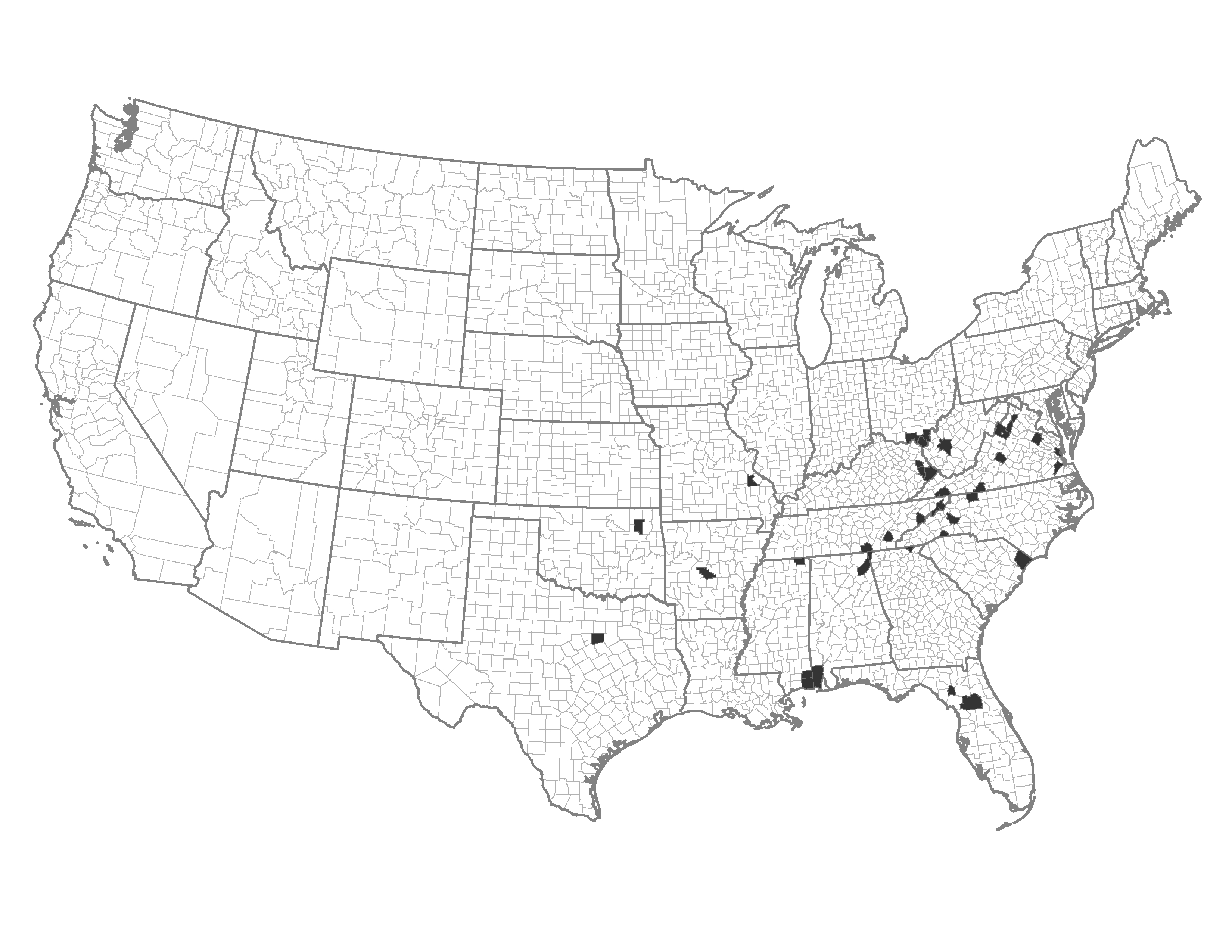8K
These counties occur mostly in the southeastern United States, along the Appalachian Mountains and the Gulf Coast, with some scattered counties in Florida, South Carolina, Texas, Oklahoma, Arkansas and Kentucky. These areas are characterized by a higher Wildland Urban Interface (WUI) area and large number of ignitions.
Example of a Typical County — Pike County, Kentucky: Pike County lies in easternmost Kentucky. It has many small private woodland parcels and many human ignitions.
National Priorities
| Vegetation and Fuels | Moderate |
| Homes, Communities and Values at Risk | Moderate |
| Human-Caused Ignitions | High |
Effective and Efficient Response:
There is high risk of large wildfires, less potential for resource benefits.
